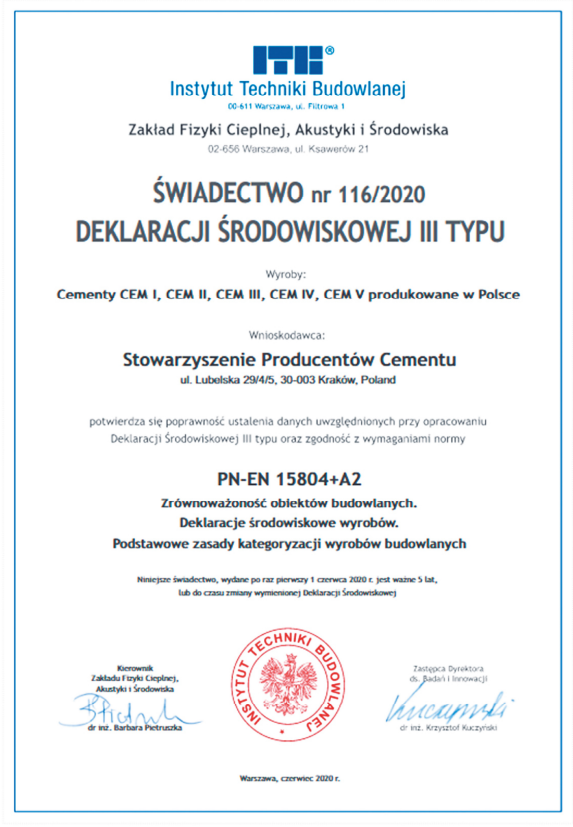

Carbon footprint of cement
 What is the carbon footprint of cement?
What is the carbon footprint of cement?
The carbon footprint of cement is the total amount of greenhouse gases emitted during the entire life cycle of cement. It is calculated by considering every phase of production starting from extraction, i.e., raw material in the mine, ending with transportation to the concrete plant or individual customer. The amount of gases is usually given in tons emitted per year.
Why should we know it?
For a long time, we were not aware that each of us leaves a special mark on the Earth. Only in the face of adverse climate changes, did we realize that this is not only a problem for future generations.
Therefore, each of us must know our carbon footprint to know what to do with it.
The carbon footprint is a term used worldwide, making it possible to compare the environmental impact of individuals, products, or companies.

How to calculate the carbon footprint of cement?
Calculations are carried out in accordance with the standards: PN-EN 15804, PN-EN 16908, PN-EN ISO 14025, PN-EN ISO 14040 and ITB PCR-A product categorization principles. Declared reference unit: 1 kg of cement CEM I, CEM II, CEM III, CEM IV, CEM V produced in Poland.
What is the carbon footprint?
| POLAND | EUROPE | ||
| CEM I | CEM II | CEM III | CEM I |
| 0,710 | 0,571 | 0,405 | 0,803 |
Environmental Product Declaration EPD
Certificate no. 116/2020 Type III Environmental Declaration
